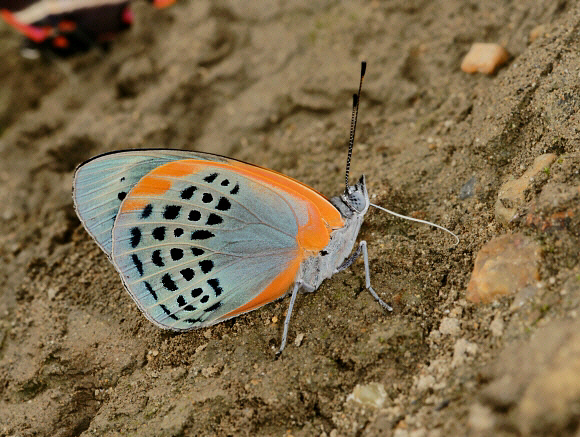 Asterope markii davisii, Manu Biosphere Reserve, Peru – Adrian Hoskins
Asterope markii davisii, Manu Biosphere Reserve, Peru – Adrian Hoskins
Introduction
The 7 species in the genus Asterope all share the typical Biblidinae characteristics of rounded wings, and boldly but simply marked uppersides.
All Asterope species have black uppersides, with a strong blue or greenish sheen. Most species, including markii, have the basal area bright orange. The underside hindwings of all species are grey, overlaid to a greater or lesser extent with a metallic greenish or bluish hue, and marked with a very distinctive pattern of black spots. In some species, such as degandii, buckleyi and some races of leprieuri, the basal two-thirds of the underside hindwings are bright orange or red.
Asterope markii occurs in Brazil, Ecuador, Colombia, Peru, Guiana and Venezuela. The subspecies davisii ( which strongly resembles the Colombian hewitsoni ) is found in Ecuador, Brazil and Peru.
Habitats
This is a lowland rainforest species occuring at altitudes between about 200-800m.
Lifecycle
Unknown.
Adult behaviour
The butterflies are elusive, and nearly always encountered singly. Males tend to be seen more often in the afternoon, when they perch on the foliage of trees at a height of about 3 metres, periodically making short rapid flights to investigate passing butterflies.
They are not often seen on the ground, but occasionally visit urine-soaked sand on well vegetated sunny river beaches.
